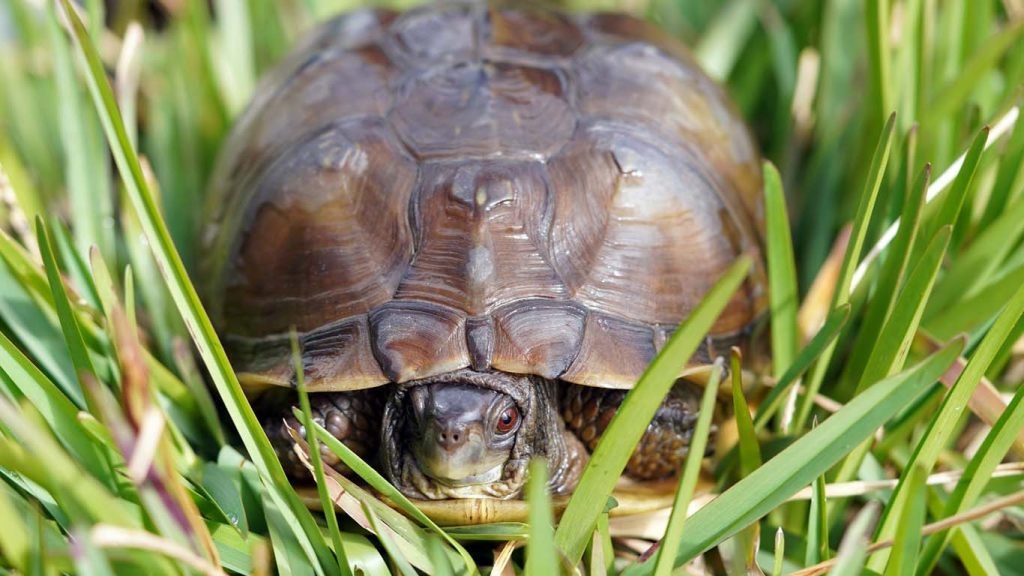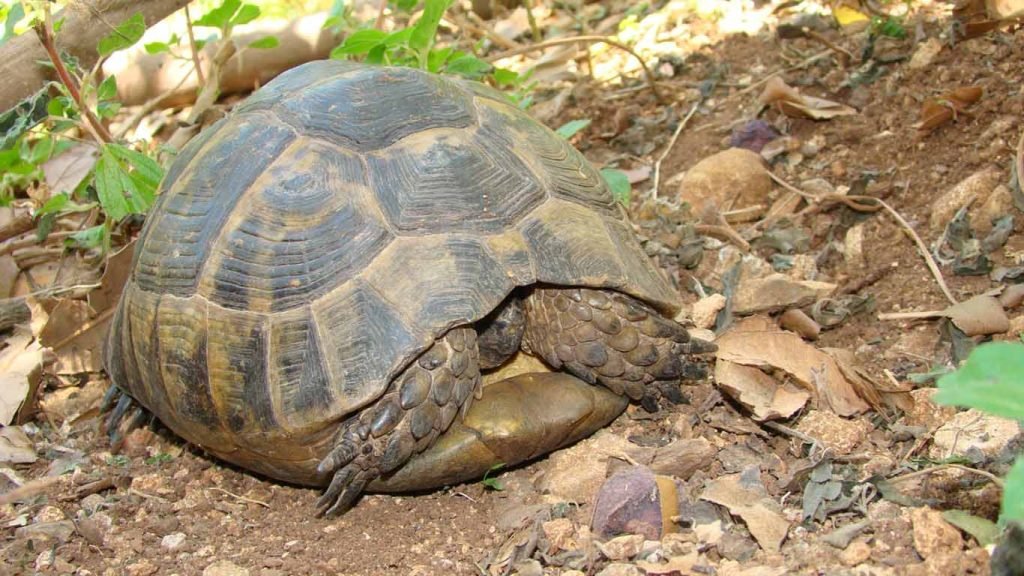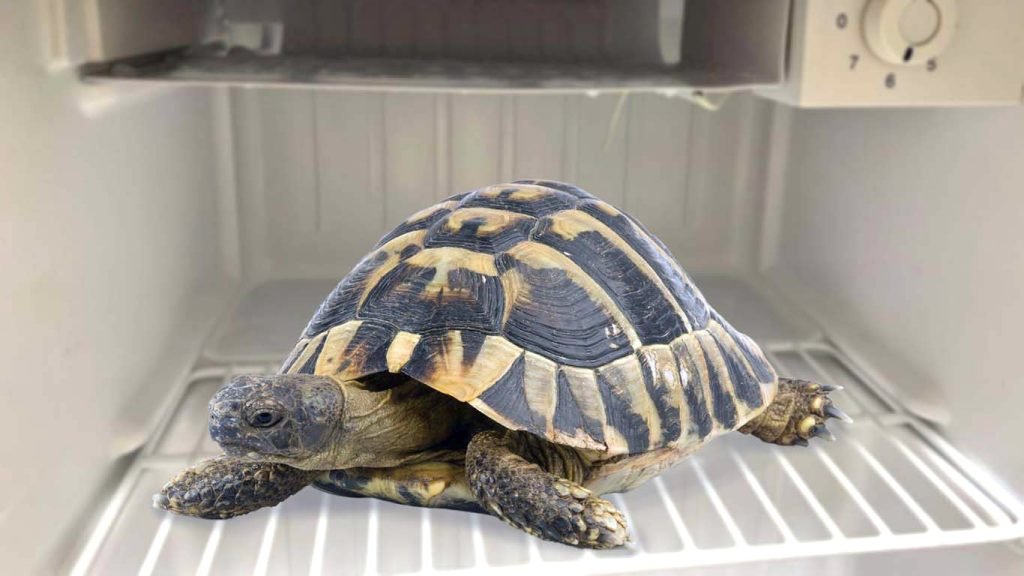Welcome to our comprehensive guide to tortoise brumation, where we’ll explore everything you need to know about hibernating your beloved pet safely. As a tortoise owner, keeping your pet healthy and happy is your top priority, and that includes managing their hibernation season effectively.
The process of tortoise brumation can be daunting, but with the right care and attention, it can be a natural and safe process for your pet. In this guide, we’ll cover all the essential steps to ensure that your tortoise navigates their hibernation phase smoothly, from preparation to waking them up.
Whether you’re a first-time tortoise owner or a seasoned pro, this guide will provide valuable insights into managing your pet’s brumation period effectively. So let’s dive in and learn how to manage tortoise hibernation and safely hibernate tortoises!
Understanding Tortoise Brumation: What It Is and Why It Occurs
First-time tortoise owners may be surprised to learn that their reptile pets go through a hibernation-like state during the colder months. This state is known as brumation and is a natural process that many reptiles go through to conserve energy when food and water sources become scarce.
During tortoise brumation, their bodies slow down, and they become less active, eating less and sleeping more. While it may sound alarming, it’s an important process for their survival in the wild, and pet owners should be familiar with the signs and steps to prepare for it.
The brumation period can last anywhere from a few weeks to several months, depending on the species and individual tortoise. It’s crucial to understand that every tortoise is unique and may experience brumation differently. Some may not go through it at all, while others may enter and exit brumation multiple times throughout the year.
Reptile Hibernation: The Natural Process
The process of reptile hibernation, including tortoise brumation, is triggered by changes in temperature and light. As temperatures drop, tortoises and other reptiles sense that winter is approaching and begin to prepare for the cold months ahead.
As a result, their metabolism slows down, and they become less active. They also stop eating and drinking as frequently to conserve their energy and resources. This is why it’s crucial for pet owners to adjust their tortoise’s environment accordingly and ensure they have adequate food and hydration beforehand.
It’s also worth noting that brumation is not the same as true hibernation, which occurs in mammals. Tortoises and other reptiles in brumation remain alert and aware of their surroundings and can be easily disturbed, whereas hibernating mammals are typically in a deep sleep and difficult to arouse.
“During the brumation period, tortoises may seem like they’re in a deep sleep, but it’s important to understand that they are still aware of their surroundings and can easily be disturbed.”
By understanding the natural process of tortoise brumation, pet owners can prepare accordingly and ensure their reptiles stay healthy and safe throughout the winter months. In the next section, we’ll explore the essential steps to take before tortoise brumation begins.

Preparing Your Tortoise for Brumation: Essential Steps to Take
Proper preparation is essential to ensure your tortoise safely and successfully enters its brumation period. Below are the essential steps you should take when preparing your tortoise for hibernation.
Step 1: Research and Understand Your Tortoise’s Brumation Requirements
Before starting the preparation, research your tortoise’s specific brumation requirements to ensure you provide the appropriate conditions. Different tortoise species have different brumation needs, such as temperature ranges, lighting, and humidity. Ensure you know the specific requirements for your tortoise’s species to provide a suitable environment.
Step 2: Gradually Lower Temperature and Lighting
To trigger your tortoise’s hibernation response, you need to gradually lower the temperature and lighting conditions. Start by reducing the temperature and light hours by a few degrees or minutes each week until the desired brumation environment is achieved. This will help ensure a smooth transition into brumation and reduce the risk of stress or complications.
Step 3: Clean and Prepare the Tortoise Brumation Enclosure
Thoroughly clean and prepare the tortoise brumation enclosure before introducing your tortoise to the environment. The enclosure should be large enough for your tortoise to comfortably move around, have adequate ventilation, and provide a secure and safe space. Place sufficient bedding material such as hay, leaves, or moss to provide insulation during the brumation phase.
| Item | Checklist |
|---|---|
| Enclosure size | Ensure the enclosure is large enough to accommodate your tortoise with sufficient space to move around comfortably. |
| Ventilation | Proper ventilation is crucial to prevent moisture accumulation and respiratory infections. |
| Security | Ensure the enclosure is secure, and there are no escape routes or potential hazards such as sharp items or toxic plants. |
| Bedding material | Place enough bedding material such as hay, leaves, or moss to provide insulation during the brumation phase. |
Step 4: Monitor Your Tortoise’s Weight and Health
Regularly monitor your tortoise’s weight and health before, during, and after the brumation period. Before entering brumation, your tortoise should have a healthy weight and be free of any underlying health issues. During the brumation period, monitor your tortoise’s weight loss, signs of dehydration, and any unusual behaviors such as unusual breathing or movement. If you notice anything concerning, seek advice from a reptile veterinarian.
Step 5: Prepare for Post-Hibernation Care
Once your tortoise completes the brumation phase, they will enter a transition period. You will need to provide additional care to help your tortoise adjust to normal temperatures and activities gradually. Prepare to reintroduce food, adjust lighting and temperature, and monitor their health during this phase.
By following the above steps, you can ensure your tortoise is adequately prepared for brumation and safely enter its hibernation phase. Remember to consult with a reptile veterinarian if you have any specific concerns or questions related to your tortoise’s health and well-being.
Monitoring Your Tortoise’s Health During Brumation: Signs to Watch For
While tortoise brumation is a natural process, it’s essential to monitor your pet’s health during this time. Here are some signs to watch for:
- Weight loss: It’s normal for a tortoise to lose some weight during brumation. However, if the weight loss is excessive, it may be a sign of illness.
- Lack of movement: Your tortoise may move very little or not at all during brumation. However, if your tortoise is not responsive at all, it may be a sign of a problem.
- Abnormal breathing patterns: If your tortoise is breathing rapidly or irregularly, it may be a sign of respiratory issues.
- Discharge from eyes or nose: Discharge from the eyes or nose may indicate respiratory infection or other health issues.
If you notice any of these signs, it’s best to consult with a reptile veterinarian. They may recommend bringing your tortoise out of brumation early or other appropriate actions.
It’s also essential to ensure that your tortoise’s enclosure is kept clean and comfortable during brumation. Clean any waste or uneaten food regularly to prevent bacterial buildup. Additionally, make sure your tortoise has access to fresh water at all times.
With proper monitoring and care, you can help ensure your tortoise’s health and well-being during brumation.

Waking Your Tortoise Up from Brumation: Post-Hibernation Care
As winter comes to an end, it’s time to wake your tortoise up from brumation. This is a delicate process that requires patience and care. Follow these steps to ensure a smooth transition for your tortoise:
Step 1: Gradually Increase Temperature and Light
Start by gradually increasing the temperature and light in your tortoise’s enclosure. This should be done over a period of several days to avoid shocking your tortoise. Provide a basking spot with a heat lamp to help your tortoise regulate its body temperature.
Step 2: Reintroduce Food and Water
After a few days, you can start reintroducing food and water to your tortoise. Offer small amounts of fresh vegetables, such as kale and collard greens, and provide a shallow dish of water for drinking and soaking. Avoid feeding your tortoise high-protein foods, such as insects and meat, during this time.
Step 3: Observe Your Tortoise
During the first few days after waking up from brumation, it’s important to closely monitor your tortoise for any signs of illness or abnormal behavior. Make sure it’s eating, drinking, and moving around normally.
Step 4: Gradually Resume Normal Activity
As your tortoise adjusts to being awake again, gradually resume normal activity levels. This may include providing more space to move around and increasing outdoor time, if weather permits.
Remember, waking your tortoise up from brumation is a gradual process that should be done with care. If you have any concerns or notice any abnormal behavior, consult with a reptile veterinarian as soon as possible.
Final Remarks
We hope this guide has provided you with the necessary knowledge and tools to safely manage your tortoise brumation period. Remember to take the time to properly prepare your tortoise for hibernation, monitoring their health closely throughout the process. And when it is time to wake them up, gradually reintroduce food and resume normal activity levels to ensure a smooth transition.
Consult a Reptile Veterinarian
As with any aspect of pet care, it is important to consult with a reptile veterinarian if you have any concerns or questions specific to your tortoise’s health and well-being. They can provide personalized advice and guidance to ensure your tortoise remains healthy and happy throughout their brumation period.
Further Resources
If you are interested in learning more about tortoise care, there are many resources available online and through local pet stores. You can also consider joining a tortoise owner community or seeking out reputable breeders and experts in your area.
Remember, with the right preparation and care, your tortoise can safely navigate the brumation season and emerge healthy and happy for another year.
FREQUENTLY ASKED QUESTIONS
What is tortoise brumation?
Brumation is a natural process in which tortoises enter a dormant state during colder months. It is similar to hibernation in other animals, but tortoises do not sleep throughout the entire period.
Why do tortoises go through brumation?
Brumation allows tortoises to conserve energy and survive in less favorable conditions, such as during winter months when food and resources may be scarce.
How long does tortoise brumation last?
The duration of brumation can vary depending on the species and individual tortoise. It typically lasts several weeks to a few months, but some tortoises may brumate for even longer periods.
Do all tortoises brumate?
Not all tortoises brumate. Some species are less likely to enter brumation, while others, especially those native to colder climates, are more likely to go through this dormant phase.
How can I prepare my tortoise for brumation?
To prepare your tortoise for brumation, gradually reduce feeding and adjust temperatures in their enclosure. Provide a suitable hiding spot, such as a burrow or sheltered area, and monitor their behavior for signs of readiness.
Should I wake my tortoise up from brumation if I’m concerned?
If you have concerns about your tortoise’s health during brumation, it is best to consult with a reptile veterinarian. They can provide guidance based on your specific tortoise’s needs and condition.
What signs should I watch for to monitor my tortoise’s health during brumation?
While brumating, tortoises will appear inactive, with reduced appetite and less movement. However, if you notice weight loss, dehydration, or any unusual behavior, it is essential to seek veterinary advice.
How should I wake my tortoise up from brumation?
To wake your tortoise up from brumation, gradually increase temperatures, provide fresh water, and monitor their response. Offer small amounts of food initially and gradually increase as they become more active.
Can I wake my tortoise up from brumation earlier than usual?
Waking your tortoise up from brumation before they have naturally completed the cycle can be stressful and potentially harmful. It is best to allow them to go through the entire brumation period, unless there are specific health concerns.
How can I ensure a smooth transition for my tortoise after brumation?
After brumation, slowly adjust temperatures back to normal conditions and gradually reintroduce regular feeding. Monitor their activity and behavior closely to ensure they are adapting well to the transition.

